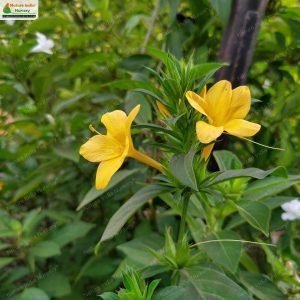Tamarix ericoides is a much-branched shrub or undershrub, typically growing 1–3 meters tall, with blackish-brown, glabrous or subglabrous stems. The plant exhibits two types of branches: young, green, vegetative branches that are deciduous in winter, and older, woody branches that persist year-round. Its leaves are alternate, minute, scale-like, and lanceolate-ovate to triangular-ovate, with an amplexicaul (stem-clasping) base and an acute apex. These leaves are glabrous or rarely pubescent and feature prominent salt-secreting glands. The inflorescences are racemes or panicles, terminal or lateral, bearing small, slightly fragrant, bisexual flowers with five pink or pale pink petals and five stamens. The flowers are clustered densely along the branches, creating a soft, feathery appearance.
The plant is adapted to arid and saline environments, with specialized roots and salt-excreting leaves. Its bark is blackish and the overall structure is open and airy, allowing it to withstand harsh, dry conditions. The flowers are followed by small, dry fruits containing many seeds.
Habitat
Tamarix ericoides is native to the Indian subcontinent and is found in seasonally dry tropical biomes. It thrives in arid and semi-arid regions, particularly on sandy or gravelly soils, saline flats, riverbanks, and floodplains. The species is distributed across many Indian states, including Andhra Pradesh, Bihar, Chhattisgarh, Goa, Gujarat, Jharkhand, Karnataka, Madhya Pradesh, Maharashtra, Odisha, Rajasthan, Tamil Nadu, Uttar Pradesh, and West Bengal. It is highly tolerant of saline and alkaline soils and can survive both drought and occasional flooding.
Planting and Care
- Light: Prefers full sun; not shade-tolerant.
- Soil: Grows best in sandy, gravelly, or saline soils; tolerates alkaline and periodically flooded soils.
- Watering: Highly drought-tolerant; requires minimal watering once established.
- Propagation: Propagated by seeds or cuttings; seeds should be sown in well-drained soil.
- Maintenance: Minimal; prune to shape or control spread if needed.
- Other Care: Avoid overwatering and ensure good drainage to prevent root rot.
Additional Information
- Ornamental Use: Sometimes planted as a windbreak, for erosion control, or as an ornamental shrub in arid landscapes.
- Ecological Role: Stabilizes sandy soils and floodplains; provides habitat in harsh environments.
- Medicinal Properties: Roots are a rich source of phytochemicals, including alkaloids, quinine, cardiac glycosides, coumarins, tannins, and flavonoids, and are used in traditional medicine for their astringent and other therapeutic effects.
- Adaptations: Possesses salt-secreting glands and deep roots for survival in saline and drought-prone areas.
- Conservation Status: Not evaluated by IUCN; locally common in its native range.























